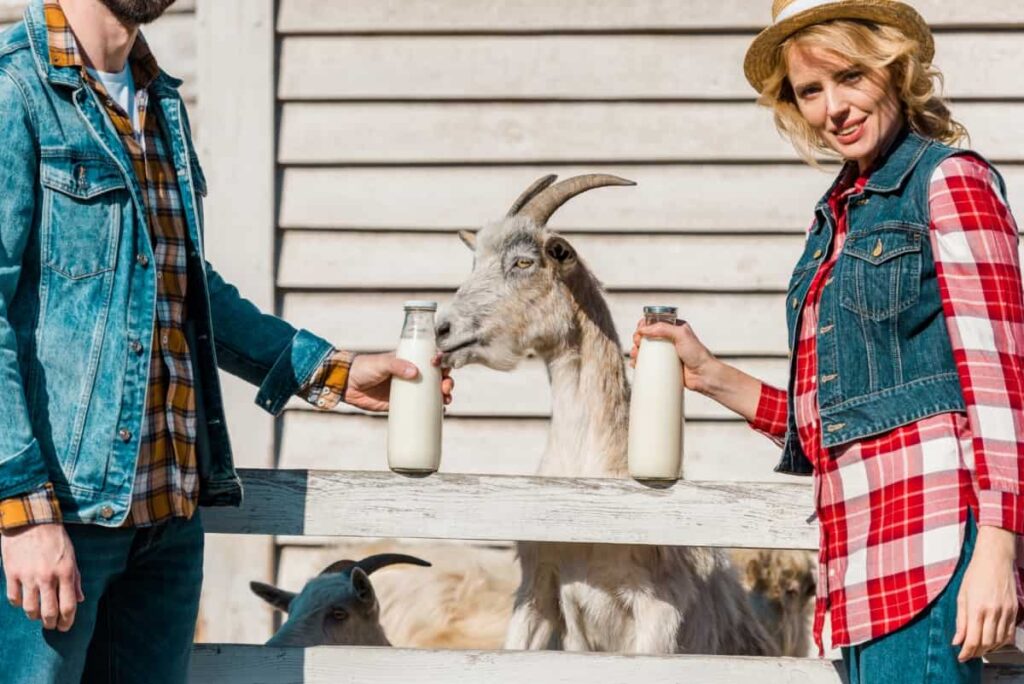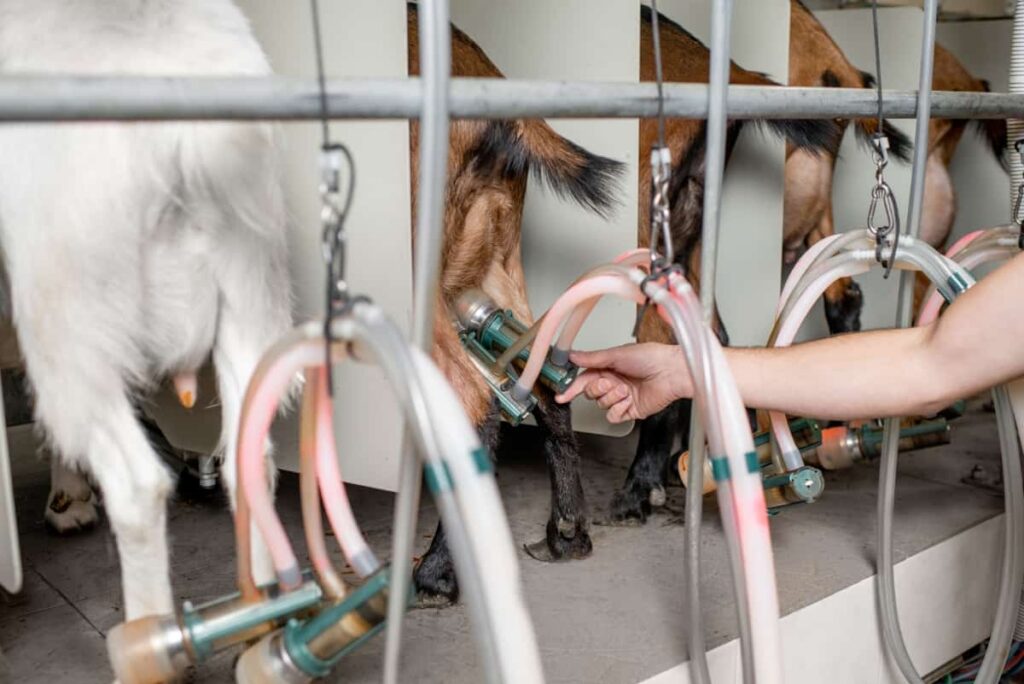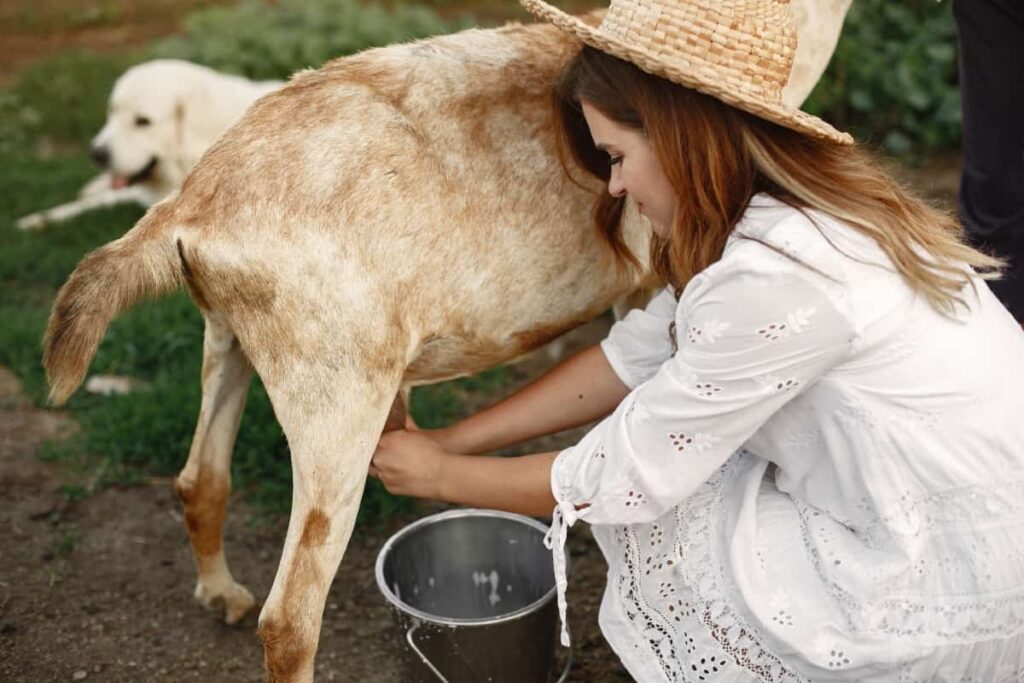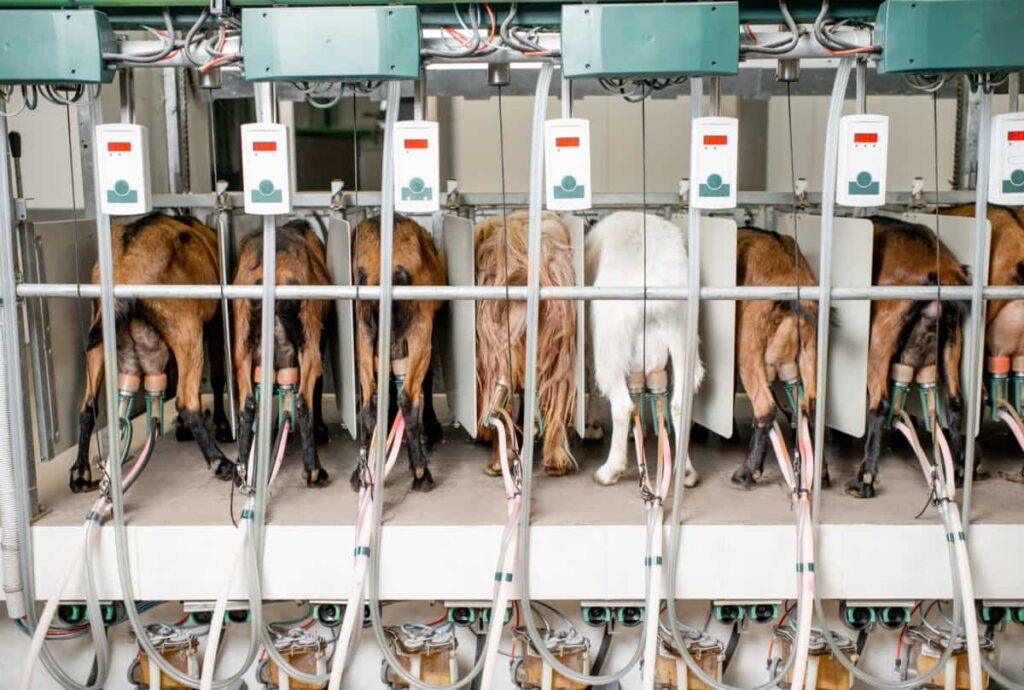Training goats for milking is a rewarding process that requires patience and consistency. Selecting the right breed of goat for milking is crucial, as each breed has its unique characteristics. Goats are valuable creatures when it comes to milk production.

Understanding Goat Behavior and Temperament
Goats are known to be intelligent animals, and each individual has personality quirks. Some goats may be outgoing and easy to train, while others might be more shy or stubborn. It’s important to spend time observing your goats to get a sense of their unique personalities. Building a bond based on respect will make the training process smoother. Goats are social creatures that thrive on routine and consistency, so establishing a predictable schedule for training sessions can help them feel comfortable and secure.
Selecting Goats Suitable for Milking
Selecting the right goats for milking is crucial to ensuring a successful and efficient milking process on your farm. When choosing goats, consider their breed, temperament, and overall health. Some breeds, such as Saanen, Nubian, or Alpine goats, are known for their high milk production. These breeds are popular choices for dairy farmers due to their quality milk output. It’s also important to assess the individual temperament of each goat before selecting them for milking.
Goats that are calm, gentle, and easily handled will make the milking experience smoother for both you and the animal. Additionally, ensuring that the goats are in good health is essential for optimal milk production. When selecting goats suitable for milking, take into account factors like age (mature does produce more milk), udder size and shape (ideal conformation allows for easier milking), and any history of previous lactations.
Preparation and Habituation to the Milking Environment
When it comes to training goats for milking, one crucial aspect is preparing and habituating them to the milking environment. Goats are naturally curious, so gradually introducing them to the milking area helps ease any potential anxiety or fear they may have. Start by allowing them to explore the space at their own pace before beginning any formal training.
In case you missed it: Goat Milking Practices and Equipment: A Beginner’s Guide

During this stage, it is key to create a calm and comfortable environment. Ensure that the milking area is clean, well-lit, and free from distractions that could disrupt the process. Consistency in routine and gentle handling will help goats feel more at ease in this new setting.
Introducing Goats to Milking Equipment
Goats can be curious yet cautious animals, so patience is key in this process. Start by familiarizing your goats with the milking area without any machinery present. Allow them to explore and get comfortable in the space before slowly introducing the equipment. Introduce the milking machine or hand-milking tools one at a time, giving your goats time to sniff and investigate each piece. Use positive support to create a positive association with the equipment. Remember, every goat may react differently, so tailor your approach accordingly.
Hands-On Training Techniques
Goats are intelligent animals that respond well to positive reinforcement and gentle handling. The effective method is to start by touching and petting the goat regularly to build trust and familiarity. This helps the goat associate human contact with comfort. Gradually introduce the goat to being touched in sensitive areas like their udder, preparing them for the milking process.
Ensure that your body language remains relaxed and non-threatening throughout the training session. Reward behavior with treats or verbal praise to reinforce positive associations with milking activities. Consistency is key in developing a routine that makes both you and your goats comfortable during milking time.
Routine Establishment for Milking
Establishing a routine for milking your goats is crucial to ensure consistency and efficiency in the milking process. Goats thrive on routines, so creating a structured schedule will help them feel more comfortable and relaxed during milking sessions.
In case you missed it: Goat Farming for Fiber: Producing Mohair and Cashmere

Start by setting specific times each day for milking to establish a predictable pattern for your goats. Consistency is key in training them to cooperate and be at ease during the process. Make sure to approach each goat with calmness and patience, as they can pick up on your energy. Gently guide them into position and reward them with treats or gentle praise after each successful milking session.
Dealing with Common Training Challenges
Training goats for milking can be rewarding but challenging. As with any training endeavor, common challenges may arise along the way. The main challenge you might encounter is goats being easily distracted during milking sessions. To address this, try to make a calm and focused environment by minimizing noise and distractions.
Another common issue is goats becoming resistant to being milked. In such cases, it’s important to be patient and gentle while providing positive reinforcement when they cooperate. Some goats may also exhibit stubborn behavior or refuse to enter the milking area. To overcome this challenge, establish a consistent routine and use treats or rewards to motivate them.
Health Checks and Hygiene Practices During Training
Regular health checks are essential to monitor their health and catch any potential issues early on. This includes checking for signs of illness, hoof trimming, and maintaining a clean living environment. Hygiene practices play a major role in preventing infections and maintaining milk quality.
Keep the milking area clean by regularly sanitizing equipment and ensuring proper udder hygiene before each session. Proper nutrition is key to supporting your goats’ overall health and milk production. Additionally, providing mineral supplements can help meet their nutritional needs during lactation.
Nutritional Support for Milking Goats
Ensuring proper nutrition for milking goats is crucial for their overall health and milk production. A good diet rich in fiber, vitamins, and minerals is essential to support lactation. Goats should have access to fresh water at all times to stay hydrated. Quality hay or pasture should make up the bulk of a milking goat’s diet. Supplementing with grain formulated specifically for dairy goats can help meet their increased energy needs during lactation.
In case you missed it: Goat Farming as a Family Business: Strategies for Success

Additionally, offering mineral blocks designed for goats can ensure they receive essential nutrients. Overfeeding the goat can lead to obesity, while underfeeding may impact milk production. Consulting with a veterinarian can help tailor a nutritional plan that suits your goats’ specific needs.
Monitoring Progress and Adapting Training Methods
As you continue training your goats for milking, it’s essential to monitor their progress closely. Keep an eye on how they react to the milking process and equipment. Adapting your training methods may be necessary based on how your goats are responding. Be flexible and open-minded in trying different approaches to see what works best for each goat. Observe any changes in behavior or performance over time. Adjustments may be needed to address any issues that arise during the training process.
By monitoring progress and being willing to adapt, you can help ensure a successful milking experience for both you and your goats. Goat’s milk is not only nutritious but also easier to digest than cow’s milk, making it an excellent option for lactose intolerance. With patience, consistency, and care for their health and well-being throughout the process, you’ll have a happy herd of milking goats in no time.
- Types of Grass Growing for Goat Farm
- How to Train Goats for Milking: A Beginners Guide
- Goat Milking Practices and Equipment: A Beginner’s Guide
- Goat Farming for Fiber: Producing Mohair and Cashmere
- Maximizing Goat Milk Production: Tips for Dairy Goat Farmers
- Goat Farming as a Family Business: Strategies for Success
- Profitable Kenya Goat Breeds for Commercial Dairy and Meat Business
- Unlock the Secrets of Oberhasli Goat: Discover Raising and Management Practices
- Ultimate Guide to Myotonic Goats: Explore Profile to Raising